Pharmacodynamics
Article Sections
Introduction
Pharmacodynamics (PD) and pharmacokinetics (PK) are the foundations of pharmacology:
- PK (what the body does to the drug) involves absorption, distribution, metabolism, and excretion (ADME), which influence properties such as bioavailability, volume of distribution, half-life, clearance, and steady-state concentration. PK determines the drug concentration at the site of action.
- PD (what the drug does to the body) involves drug-receptor behavior (agonism, antagonism), dose-response curves, therapeutic indices, and desensitization phenomena such as tolerance and tachyphylaxis.
This article covers the major aspects of PD.
Agonists
Drugs act on various receptor types, including G protein–coupled receptors (GPCRs) (Figure 1), ion channels (Figure 2), tyrosine kinases (Figure 3), nuclear hormone receptors (Figure 4), and enzymes. These receptor signaling systems are discussed in more detail in a separate article.
Continue Learning with UWorld
Get the full Pharmacodynamics article plus rich visuals, real-world cases, and in-depth insights from medical experts, all available through the UWorld Medical Library.
Figures
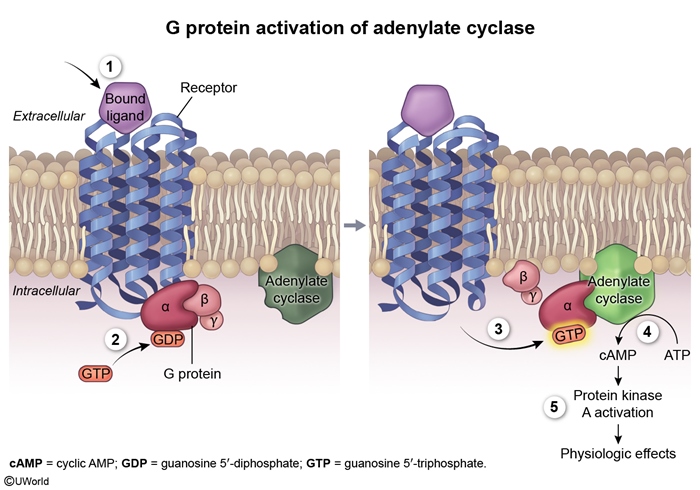
Figure 1
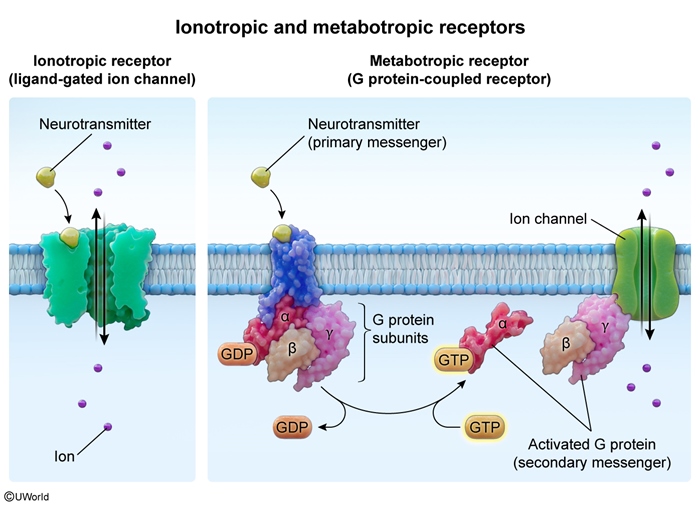
Figure 2
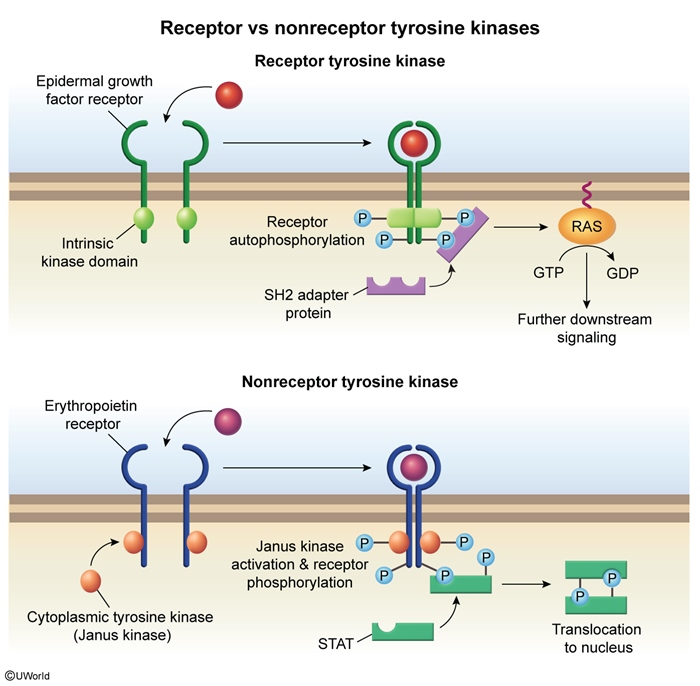
Figure 3
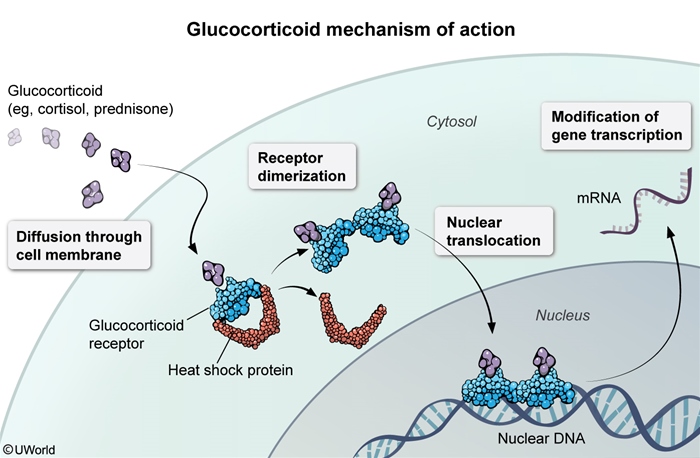
Figure 4
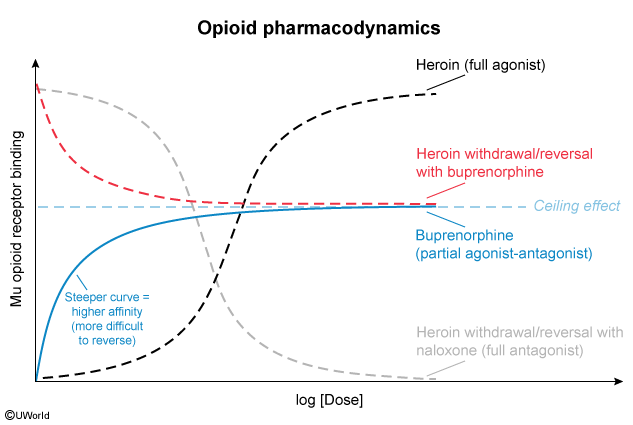
Figure 5
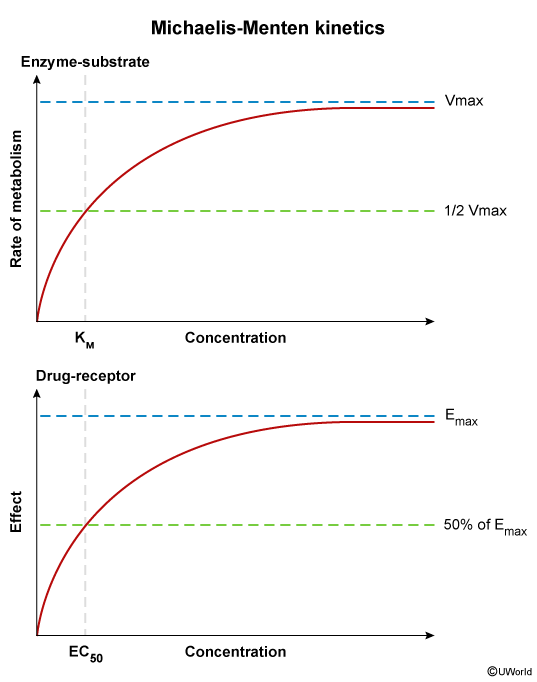
Figure 6